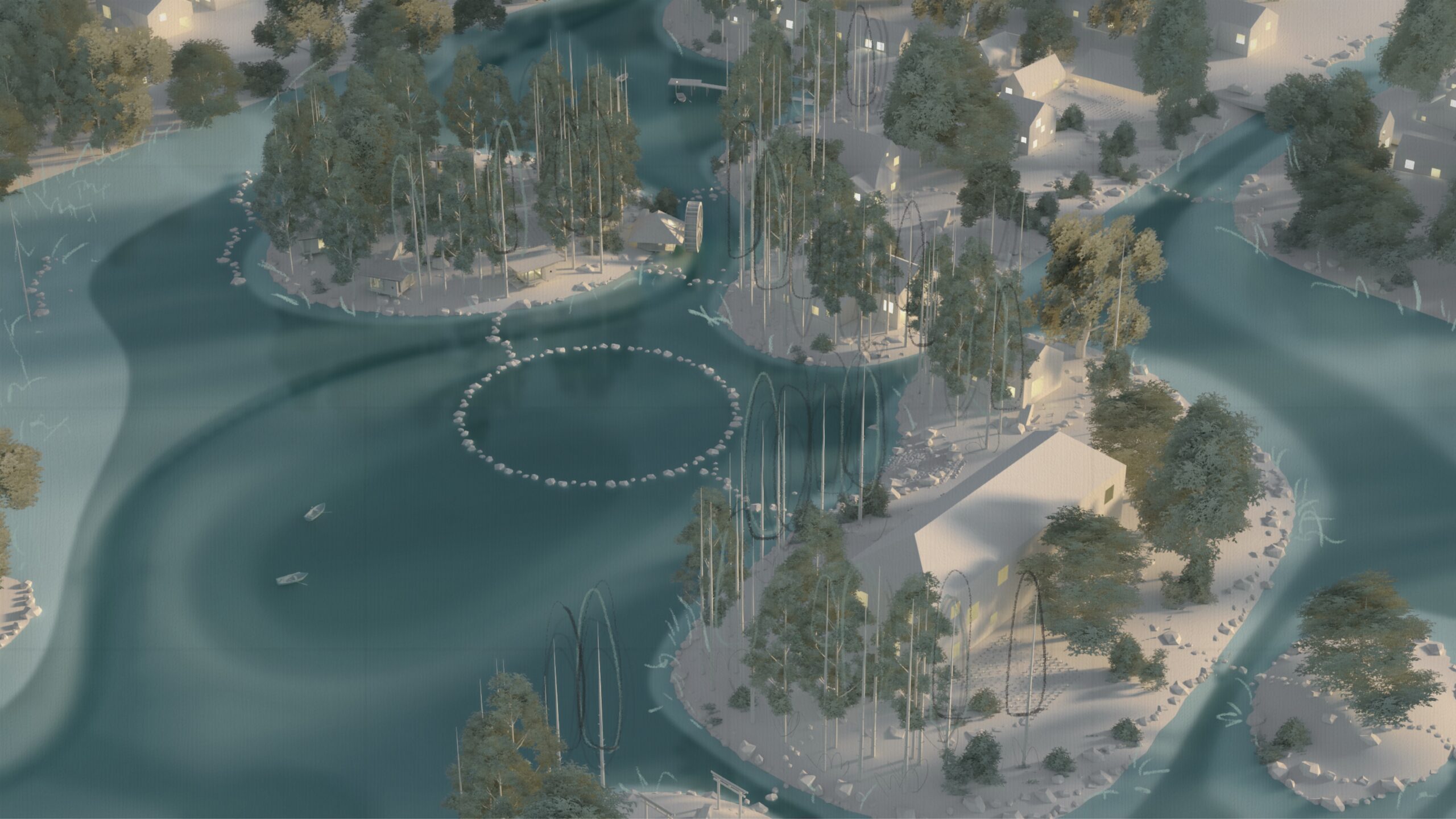Body-Landscape-Rhythm
Metathesis of bodies and stones at the ground of Volax in Tinos
The main question of this thesis is how the human body is integrated into the landscape, i.e. the action of the active human body within the landscape which is shaped and shaped.
As the primary act of shaping landscape and body, the act of building, and more specifically the building of dry stone, is chosen.
It is the physical labor of the act of building that shapes the landscape and incorporates the body into it, producing the condition of the body’s inhabitation of the landscape.
The territory of Volaχ, in Tinos, is chosen as the place of action for this act.
In the village of Volax, the landscape differs from the rest of the island with the appearance of the stone element in the form of granite volcanic boulders, an element that is a dominant feature on the plateau around the village of Volax and in the Upper Parts. Spherical forms of granitic formations also known as “volaches”, due to the disintegration, erosion – dissolution -disintegration something that happens to every rock until it transforms into soil.
The very name of the village expresses the dual concept of a place as the result of primary matter and human action.
In Volax, the human traces that integrate the dry stone constructions into the natural landscape with the granite formations are evident. The drystone stone is in direct dialogue with the rock and the relationship between the structure (drystone), nature (granite formations) and the body that acts on the landscape and connects the structure to nature is intensified.
The building structures the landscape of Volax and creates a geotope where the action of the building integrates the body into the landscape through the construction of dry stone. The relationship between human action and the primary material of stone and the inclusion of the human body in the landscape through the act of building is intense.
I recognize the action of dry stone building as the primary action of shaping the rural landscape of Tinos. The dry stone terraces that result are the result of human activity through which the inhabitation appears both as a result and as a process of building the dry stone in the specific landscape.
The path in this landscape is chosen as the means of integrating the body into the landscape.
The physical work of the building is what shapes the landscape and the body, while at the same time the route defines the rhythm of the action of shaping and integrating the human body into the landscape.
The way in which the landscape is embodied here so that the moving body connects with the environment, joins it and creates meaning, is the rhythm that results from the metathesis of the structures of the dry stone and the body.
To apply the type of metathesis, 4 categories of drystone structure are created from the previous marriage: a- face-to-face sitting, b- sitting, c- body integration_ drystone splitting, d- lying down_ single drystone.
In the second level of processing, through the organization of the ground of the cobblestone in a section according to the sets of dimensions, it follows that the way in which the human body is included in the landscape and in which the embodiment of the landscape is done is the rhythm of the step, which comes as a result of combining the numbers of the steps with the corresponding dimensions of their platforms.
A geotope emerges that is shaped by the human body and shapes it, through the rhythm of the body’s action. This is done either through the metathesis of dry stones, and thus the metathesis of the body, or through the rhythm of the human body’s pace on the cobblestones.
Author: kornilia christodoulou
School: The Department of Architecture of University of Thessaly






















